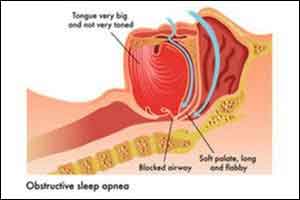- Home
- Editorial
- News
- Practice Guidelines
- Anesthesiology Guidelines
- Cancer Guidelines
- Cardiac Sciences Guidelines
- Critical Care Guidelines
- Dentistry Guidelines
- Dermatology Guidelines
- Diabetes and Endo Guidelines
- Diagnostics Guidelines
- ENT Guidelines
- Featured Practice Guidelines
- Gastroenterology Guidelines
- Geriatrics Guidelines
- Medicine Guidelines
- Nephrology Guidelines
- Neurosciences Guidelines
- Obs and Gynae Guidelines
- Ophthalmology Guidelines
- Orthopaedics Guidelines
- Paediatrics Guidelines
- Psychiatry Guidelines
- Pulmonology Guidelines
- Radiology Guidelines
- Surgery Guidelines
- Urology Guidelines
New cost-effective imaging to assess risk of Obstrucive Sleep Apnea

The study aimed to reproducibly quantify pharyngeal anatomy of 318 control subjects with AHI and 542 subjects with OSA and determine the differences. Using overnight polysomnography, a laser ruler, and morphometric photographs, researchers found that digital morphometrics could be used to assess the differences between subjects with OSA and control subjects and associations with AHI. Results showed that a digital camera and laser ruler can be used to quantify intraoral anatomy, particularly for measures of the tongue and mouth, airway visibility, and Mallampati score. This study also showed that measures of the tongue were larger in subjects with OSA vs control subjects in unadjusted models and controlling for age, sex, and race. Similar results were also found in patients with AHI severities.
"Digital morphometrics is an accurate, high-throughput, and noninvasive technique to identify anatomic OSA risk factors," said Dr. Richard J. Schwab, lead researcher. "Morphometrics may also provide a more reproducible and standardized measurement of the Mallampati score."

Disclaimer: This site is primarily intended for healthcare professionals. Any content/information on this website does not replace the advice of medical and/or health professionals and should not be construed as medical/diagnostic advice/endorsement or prescription. Use of this site is subject to our terms of use, privacy policy, advertisement policy. © 2020 Minerva Medical Treatment Pvt Ltd